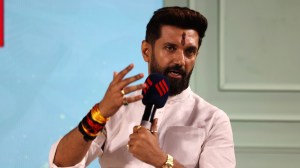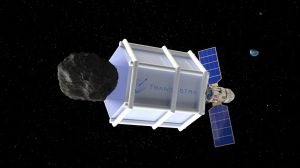Greenland is holding what is perhaps its most-watched Parliamentary election today (March 11). While the unofficial results will be known by early Wednesday morning India time, official counting of all votes will take longer, as ballot papers arrive over the air and water.
Greenland has a population of around 57,000, mostly of Inuit heritage, of which around 40,000 will vote to choose 31 members of Inatsisartut, its Parliament. The election comes at a time when US President Donald Trump has repeatedly insisted he will “get” Greenland “one way or the other”, and when momentum within the island is growing of independence from Denmark, whose autonomous territory Greenland is.

Here’s all you need to know about the polls, about Greenland’s complicated bid for independence, and if the election results can help Trump’s plans.
Who are the major players, issues?
Story continues below this ad
The biggest issues are local, such as jobs, the economy, and access to healthcare and education. The question of exactly how and when independence from Denmark has to be achieved — the former colonial power still controls Greenland’s defence and foreign policy — is also significant.
Among the contestants, there’s the ruling party, Inuit Ataqatigiit, led by Prime Minister Múte Egede, and its ally in the government, Siumut, both of the social democrat traditions. They advocate a cautious path to independence.
The principal opposition is left-wing Naleraq, which is the most enthusiastic about future cooperation with the US and the most impatient about independence from Denmark.
Then there is the centre-right Atassut, which wants to stay with Denmark, at least for now.
Story continues below this ad
What is Greenland’s connection with Denmark?
Greenland was a Danish colony from the 19th century. In the decolonisation wave post World War II, in 1953, it became an autonomous territory. Today, while there is a strong sentiment for independence, the island’s economy remains heavily dependent on the “block grant” Denmark provides, which is basically a subsidy of around £480 million a year. Also, Denmark’s welfare programmes, which include healthcare support, are crucial for Greenladers.
While Greenland has abundant natural resources — including rare minerals, which have attracted international attention — their extraction has never been fully explored, thanks to the hostile weather conditions and concerns over damage to the environment.
And how does Trump figure in all this?
The US has had an interest in Greenland long before Trump began to talk of buying it. Greenland is located in the North Atlantic Ocean, between Europe and North America, making it strategically important.
During the Second World War, when Greenland was threatened by Germany, the US defended it as Danish territory and built air bases here. “The US — after having considered buying the island — formally recognised Danish sovereignty in the 1951 Defence Agreement in return for being granted substantially free hands in utilising Greenlandic territory for defence purposes,” Ulrik P Gad, of the Center for Advanced Security Theory, University of Copenhagen, wrote in a research paper in the journal Cooperation and Conflict in 2014.
Story continues below this ad
The US has a large air base in Greenland, the Pituffik Space Base, earlier the Thule Air Base.
From Greenland, the US can monitor and prevent any missile coming towards it from Russia, China, or even North Korea. Similarly, it can launch missiles and ships towards Asia or Europe more easily from Greenland.
Trump’s interest, however, goes beyond just the military. He is also interested in the island’s rare earth minerals, which are used in mobile phones, electric vehicles and other consumer electronics, but also in bombs and other weapons. At present, China is a major supplier of these minerals.
Those who want Greenland to quickly break away from Denmark — the political party Naleraq, for instance — believe cooperation with the US is important for economic and security reasons. Indeed, Trump is promising to “make Greenlanders rich”. However, the island’s people wish to have these transactions on their own terms. According to a poll, about 85% of the Greenlanders do not want to become a part of the US.
Story continues below this ad
Also, Greenland so far has prioritised the environment in extraction of natural wealth. For example, in 2021, it passed a law banning uranium mining. However, were the field opened to private players looking to maximise profit, the region’s delicate ecology could suffer.







































